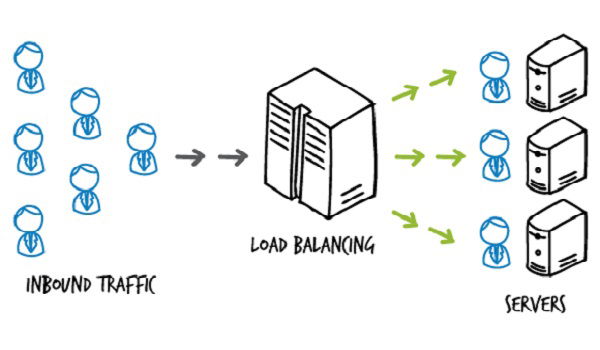
Introduction
In practice, load balancing is a very important part of large projects, helping to route requests to different servers.
To make learning easier, you need to host 3 simple nodeJS servers to easily practice with this topic.
Installation
To implement this feature, we need the help of PM2
To install, run the following command
sudo npm install -g pm2
After installation, run the following command to run 3 nodeJS servers
pm2 start /srv/nglearns/load-balancer-demo/server-1.js
pm2 start /srv/nglearns/load-balancer-demo/server-2.js
pm2 start /srv/nglearns/load-balancer-demo/server-3.js
To check if the servers are running or not, use the following command
pm2 list
Result
# ┌────┬────────────────────┬──────────┬──────┬───────────┬──────────┬──────────┐
# │ id │ name │ mode │ ↺ │ status │ cpu │ memory │
# ├────┼────────────────────┼──────────┼──────┼───────────┼──────────┼──────────┤
# │ 0 │ server-1 │ fork │ 0 │ online │ 0% │ 37.4mb │
# │ 1 │ server-2 │ fork │ 0 │ online │ 0% │ 37.2mb │
# │ 2 │ server-3 │ fork │ 0 │ online │ 0% │ 37.1mb │
# └────┴────────────────────┴──────────┴──────┴───────────┴──────────┴──────────┘
Make sure your 3 NodeJS servers are set up to run on ports 3001, 3002, 3003
Deployment method
To deploy, let's refer to the following example
events {
}
http {
upstream backend_servers {
server localhost:3001;
server localhost:3002;
server localhost:3003;
}
server {
listen 80;
server_name nglearns.test;
location / {
proxy_pass http://backend_servers;
}
}
}
Here, by using upstream context, we will create a set of servers and configure them to become a single BE
Run the following command to see how they work.
while sleep 0.5; do curl http://nglearns.test; done
Result
# response from server - 2.
# response from server - 3.
# response from server - 1.
# response from server - 2.
# response from server - 3.
# response from server - 1.
# response from server - 2.
# response from server - 3.
# response from server - 1.
# response from server - 2.
You can use the Ctrl + C key combination to stop the process.
In the example above, you can see that nginx automatically routes user requests to each server.
To stop any server process, use the following command
pm2 stop server-1
By doing this, you have successfully stopped server 1 in the BE system.